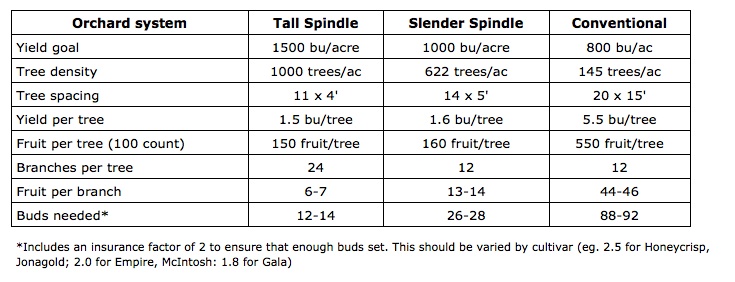
Features
Production
Research
Pondering precision pruning in 2014
March 25, 2014 By Leslie Huffman apple specialist OMAF & MRA
March 25, 2014, Guelph, Ont – Last March, at the Cornell Apple Summit on Precision Crop Load Management, we learned techniques to more accurately achieve the desired crop load for our yield goals. In 2013, we field tested two of these techniques: Precision pruning in March, and in May, the Fruitlet Growth model to predict how many fruitlets will drop after a chemical thinner. Both techniques gave good information for further management decisions on crop load.
After a heavy crop in most areas in 2013, there could be a smaller set of fruit buds for 2014. Of course, this will depend on many factors including cultivar, tree age and health, and last year’s weather. Using Precision Pruning can still be useful this year, and in fact, may be more important to do earlier – before any pruning is done.
The first step is to determine how many fruit buds you need for your yield goals. Here is a chart that compares three common systems in Ontario – for each of your blocks, you should develop a similar chart:

The next step is to carefully look at fruit buds in each block. In mid-winter, it is harder to differentiate between fruit and leaf buds. Look at the spur structure, where apples were picked last year. Bring some buds inside to slice open – with a good hand lens, you can see floral parts.
If your crop potential is light, prune a demonstration tree and do a final bud count. If needed, adjust your pruning to leave more fruiting area.
If your crop potential is heavier, remove more large branches with fruiting buds. Reducing crop in the dormant stage results in the biggest increase in fruit size. The energy is directed to fruit size rather than setting too many fruit. Reducing your crop load through pruning is a win-win situation.
Print this page